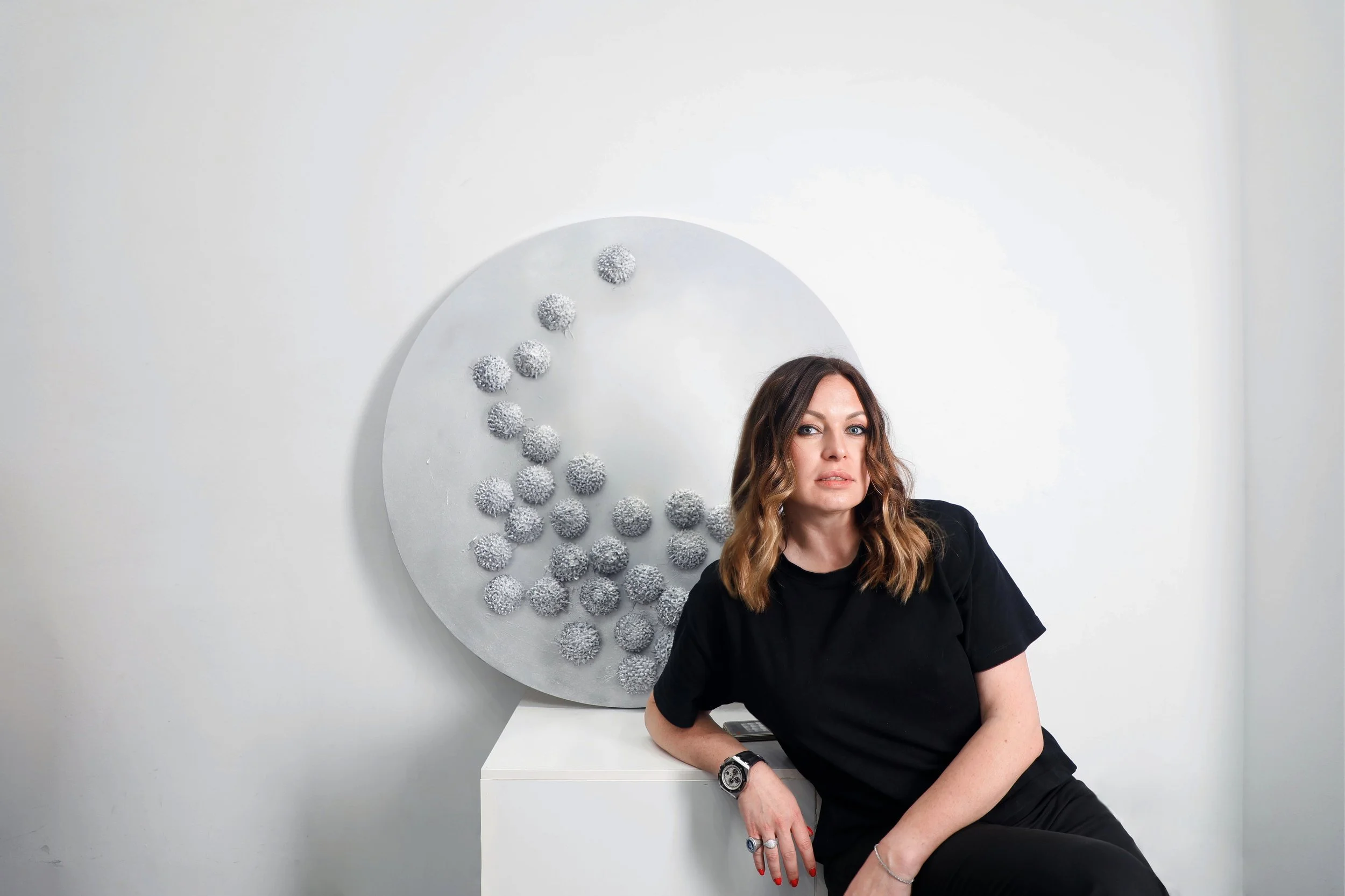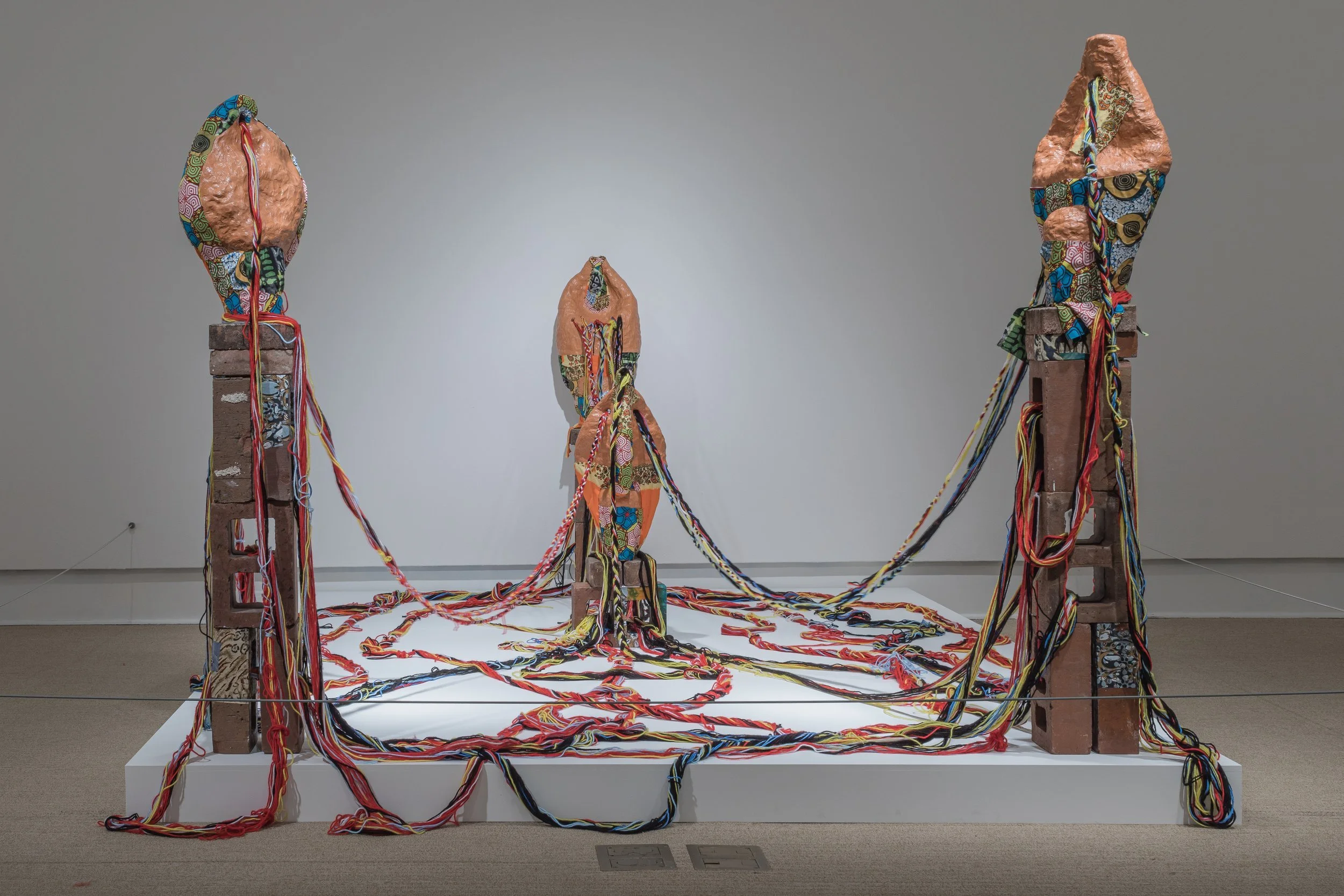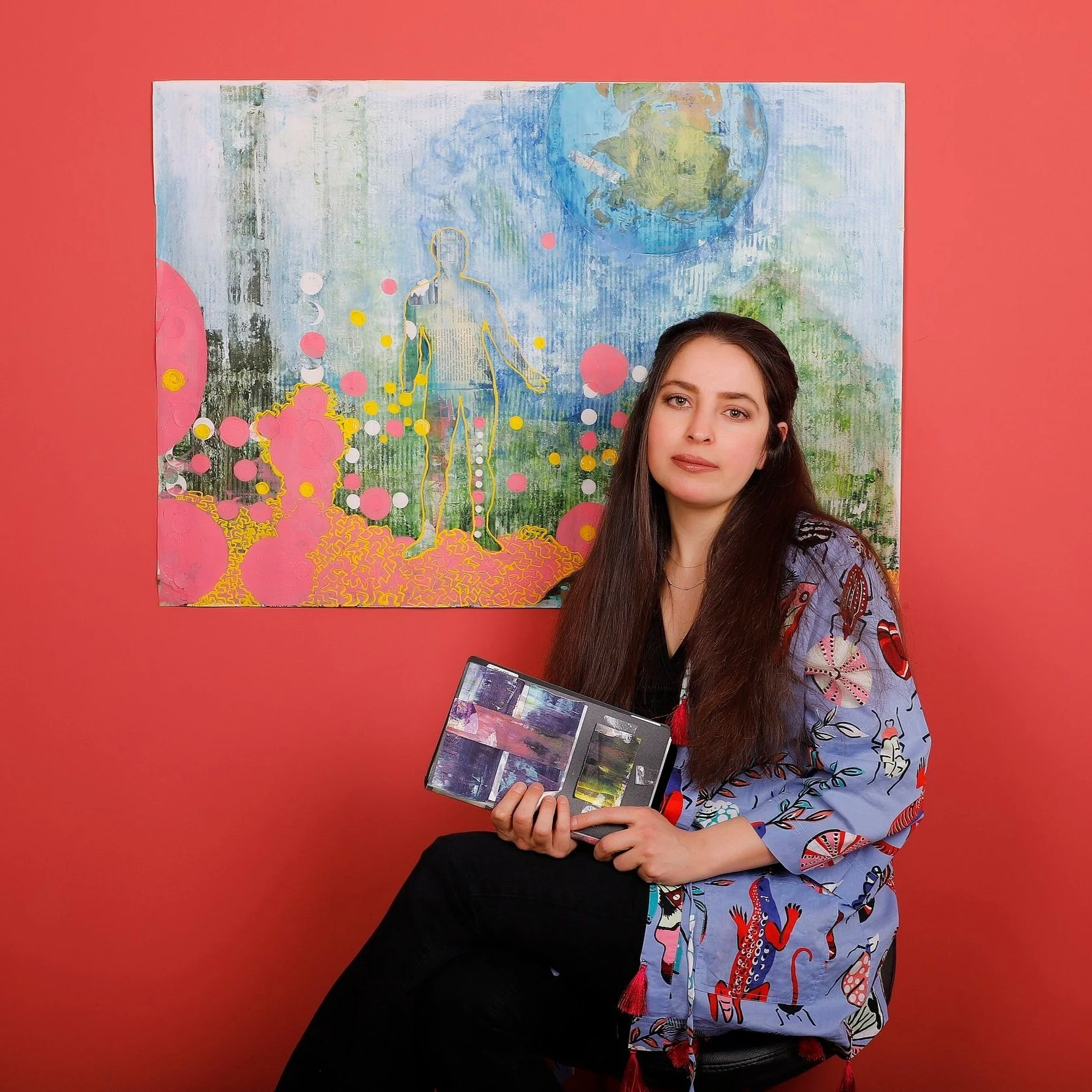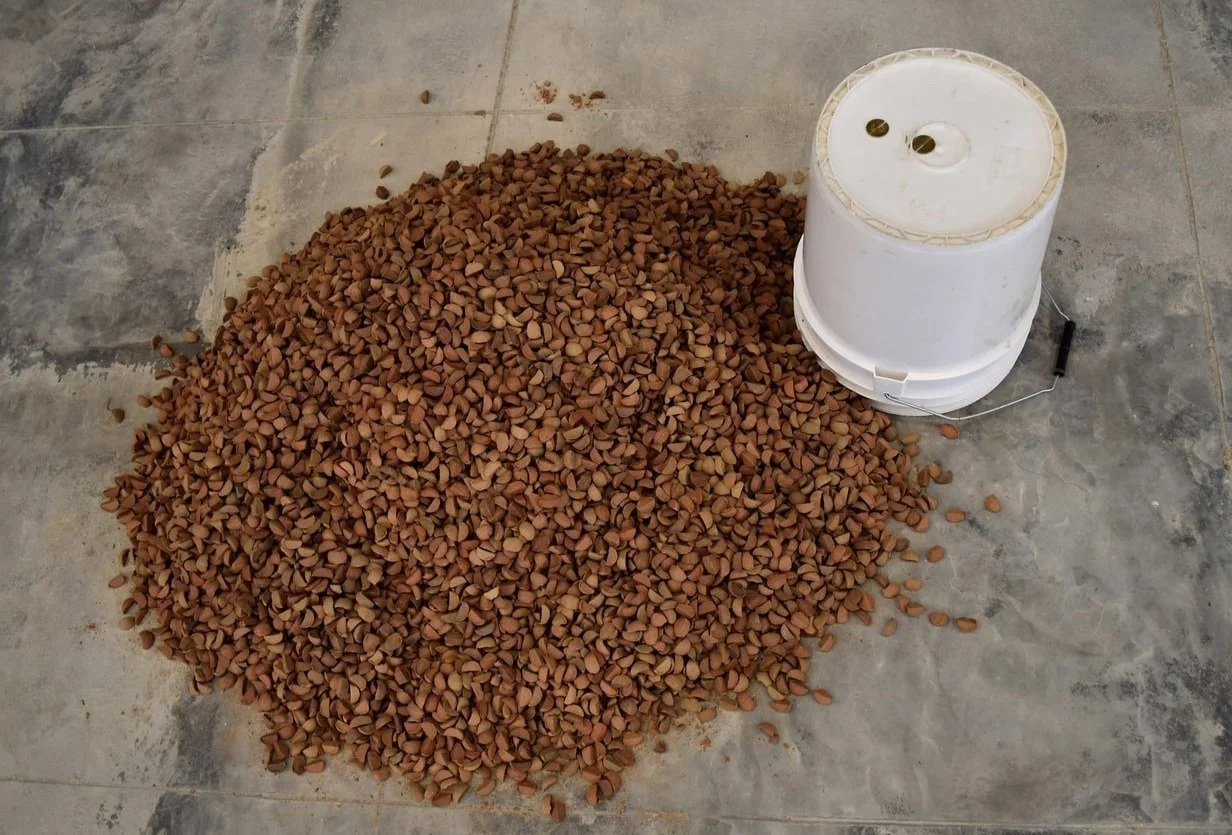10 Questions with Arani Halder
With a belief that there lie important and revolutionary stories from those that go unheard, Arani Halder uses her work to open windows into the lives of different people and the broader socio-political movements that help shape them. Her work explores the connections between language, culture, pluralism, autonomy, and the power of knowing one’s roots. Through media such as bookmaking, bookbinding, printmaking, painting, sculpture, and even cooking, she straddles the line between abstract, conceptual, and still digestible.
Being native to the City of Joy but having lived throughout India, Arani understands the importance of a pluralistic and collectivist society but respectful of autonomy. She states that she is equal parts artist and designer; the base of her work, while being artistic and conceptual, is produced into work with a designer’s sensibility that aims to tackle the issues at hand.
Arani graduated from Parsons School of Design in 2020 with a degree in Communication Design and Fine Arts. She has worked with the Whitney Museum of Art and the United Nations to help create lasting work. Arani’s current explorations continue to expand upon themes of South Asian socio-politics and identity.
Arani Halder - Portrait
ARTIST STATEMENT
Bespectacled with a south Asian lens and silver-rimmed glasses, Arani Halder tends to believe that pluralism can pave the way for a more equitable future. She sees her work as being socio-political commentaries with notes of spicy satire. She enjoys experimenting with various forms of media such as bookmaking, bookbinding, printmaking, painting, sculpture, and even cooking to create conceptual work that is still digestible.
Arani likes to push the boundaries of how contemporary artists can engage in the current social discourse and use their art as a means of political expression or even resistance. As of this moment, her goal is to inspire those who see her work to look more carefully at the world around them, and to be able to contextualize themselves within larger systems.
People, Period. - Mixed Media, 4.5x4.5 cm, 2019 © Arani Halder and Anamika Ananth
INTERVIEW
First of all, introduce yourself to our readers. How would you define yourself as an artist? And what makes you unique?
My name is Arani Halder, and I’m a visual artist and designer based in New York City. I was born in Kolkata, India but have spent most of my childhood in New Delhi. Most of my work explores the connections between language, culture, pluralism, and the power of knowing one’s roots. I have experimented with diverse media such as bookmaking, bookbinding, printmaking, painting, sculpture, and even cooking. I believe that I am equal parts artist and designer in the sense that my art, while being abstract and conceptual, is produced into work with a designer’s sensibility that aims to tackle the issues at hand.
You moved from India to the USA and are currently based in New York City. How was this move beneficial to your art?
Moving to New York has influenced my art and design skills in the best way possible. New York is arguably one of the largest cultural centers in the world; it is home to hundreds of art institutions, including a vast array of museums, galleries, performing arts centers, etc. There is an abundance of creativity and opportunities everywhere you look here. Over the six years I have spent in the city, I have met and worked with some incredibly talented artists and mentors who have not only inspired and motivated me, but have also helped cultivate new ideas and practices.
People, Period. - Mixed Media, 4.5x4.5 cm, 2019 © Arani Halder and Anamika Ananth
People, Period. - Mixed Media, 4.5x4.5 cm, 2019 © Arani Halder and Anamika Ananth
In your work, you often refer to south Asian culture. What are the aspects that particularly influence your work in this regard? And how do you translate them into art?
Having grown up in India, most of the art, design, and culture I was exposed to was primarily South Asian. Most South Asian art is extremely rich and diverse, not just in terms of mediums and materials but also the content they depict. I have experimented with a lot of these diverse mediums, such as fabrics, papers, inks, etc. At the same time, my art also draws on a lot of social and political issues prevalent in India. I aim to use my work to engage in the current social discourse and almost use it as a means of cultural and political expression. My goal is to inspire people, though not just a South Asian audience, to look more carefully at the world around them, and to be able to contextualize themselves within larger systems.
You work with numerous techniques, like bookmaking, bookbinding, printmaking, painting, sculpture, and even cooking. How do you differentiate your approach when working with different techniques?
To me, the form of an artwork is very important to the message it’s trying to portray. In an artist’s book, for example, all design decisions, such as paper type, binding, printing, typography, etc., are expected to be purposeful and intrinsic to the piece as a whole. Though my subject matter may be similar in many of these mediums, I keep the specific aspects of each medium in consideration so as to make the most of the form I’m working in.
People, Period. - Mixed Media, 4.5x4.5 cm, 2019 © Arani Halder and Anamika Ananth
And on the contrary, what are the recurring themes you investigate with such different mediums?
My subject matter is the binding factor between my different mediums. As I mentioned, my work focuses on topics such as language, culture, pluralism, autonomy, and the power of knowing one’s roots; and it is always interesting to experiment with how each of these can be translated into and depicted through such diverse forms.
In your statement, you often refer to pluralism. Can you give us a definition? And how does this reflect in your work?
I would define pluralism, specifically cultural pluralism, as the recognition and celebration of distinct cultural identities, values, and practices. It values respectful integration over assimilation and thus promotes change and growth within cultures and communities. A lot of my work references concepts like pluralism and autonomy as a means to open windows into the lives of diverse people and the broader socio-political movements that shape them. I want to encourage people to respect difference and value diversity through my art.
People, Period. - Mixed Media, 4.5x4.5 cm, 2019 © Arani Halder and Anamika Ananth
People, Period. - Mixed Media, 4.5x4.5 cm, 2019 © Arani Halder and Anamika Ananth
You work with both art and design. Is there anything else you would like to experiment with?
I’m still exploring the intricacies of combining art and design. I believe the intersection of the two forms explores form, function, and expression of thought. Therefore, my work often straddles the line between abstract, conceptual, and still practical. I am trying to experiment with different kinds of bookmaking and bookbinding and push the different ways I can combine my typographic skills with the craft of constructing a book. I want to work with unusual materials like clay and metal to see how they can be seamlessly incorporated into bookmaking.
What do you think of digital exhibitions and presentations? Have you participated in any, or are you into more traditional ways of presenting your work, like physical exhibitions in galleries and museums?
I have participated in one digital exhibition to date; People, Period. was displayed on a screen in Times Square alongside other inspiring and thought-provoking work. I think digital exhibitions are a great step towards making art more accessible. They are often pretty decent at imitating the aesthetics of a physical exhibition while increasing the worldwide reach of the artwork. Though the experience of a real-life exhibition, to really feel and take in a piece of art, is unmatched and cannot be replaced by its digital counterpart, a digital exhibition is still a great step towards making art displays more flexible and approachable.
People, Period. - Mixed Media, 4.5x4.5 cm, 2019 © Arani Halder and Anamika Ananth
People, Period. - Mixed Media, 4.5x4.5 cm, 2019 © Arani Halder and Anamika Ananth
What do you hope to accomplish this year, both in terms of career goals and personal life?
I am trying to work on more passion projects this year! I love collaborating with my fellow artists and designers and coming up with new and innovative ideas together. I also want to experiment with more unusual materials and mediums and really push the boundaries of bookmaking.
Finally, what are you working on right now? Any new projects you would like to share with our readers?
Fellow artist Anamika Ananth and I are planning on writing and designing a cookbook that reclaims South Asian cuisine. It’s a response to how a lot of POC foods have been appropriated by other cultures; this artist’s book will inversely add a South Asian flair to western cuisines and reimagine their staples.
























